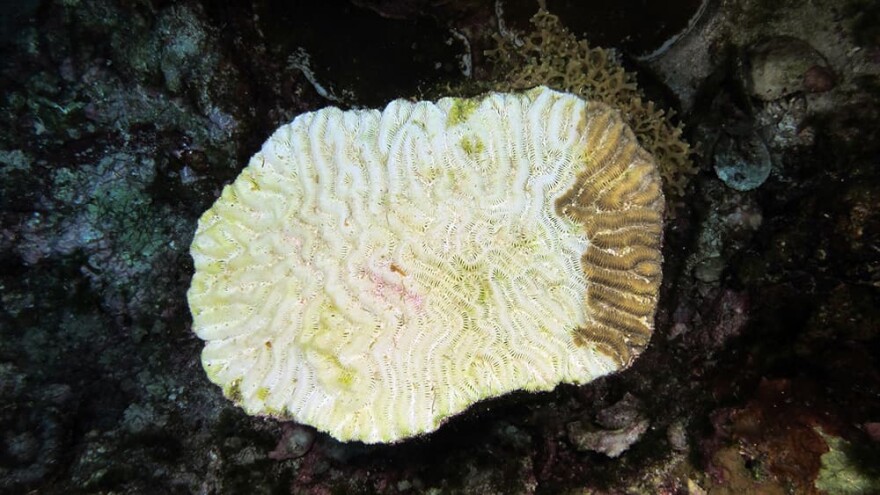It’s been eight years since a deadly outbreak of disease began ravaging Florida’s coral reefs. Now, scientists worry it has reached the Gulf of Mexico’s sole marine sanctuary.
Sitting about 80 miles off the coasts of Louisiana and Texas, the Flower Garden Banks National Marine Sanctuary holds more than a dozen coral reefs that host thriving, colorful ecosystems just beneath the water’s surface.
But those corals could be under threat. During a dive in early September, researchers documented lesions and tissue loss on the brain and star coral — symptoms of the dreaded Stony Coral Tissue Loss Disease.
Since 2014, the stony coral disease has affected over 96,000 acres of reef in Florida, sickening the corals and killing them off within months after it eats away at their tissue. It also spread to the Caribbean and Mexico. In the past four years, the disease has killed about 46% of reefs near Cozumel.

In a press conference Wednesday, scientists with the National Oceanic and Atmospheric Association released plans to help the vulnerable habitat. Those plans include money for expanding the capacity for detecting and preventing the disease’s spread – something that researchers have worked to do in the Flower Gardens after symptoms were recorded in September.
About $625,000 over the next five years will go toward disease response in the marine sanctuary to support monitoring, intervention and coral rescue.
Scientists at the conference said it’s also possible the coral could have been stricken with another “white plague” disease.
Even without the stony coral disease, the health of coral reefs across the planet was already in decline due to a number of factors: rising ocean temperatures amid global warming, unsustainable fishing practices that weaken the ecosystem and pollution flowing from the land into the seas.
“Add an atypical disease, and it just puts the ecosystem under further stress,” said Jennifer Koss, director of the NOAA Coral Reef Conservation Program.

Across the Atlantic Ocean where the disease has spread, NOAA researchers noted there is still so much they’ve yet to learn about the disease – including its cause or carrier.
For coral and other marine diseases in general, Andy Bruckner, a research coordinator at NOAA’s Florida Keys National Marine Sanctuary, noted that the field is still young, with a lot of room to grow.
“We’re still in the dark ages of coral diseases,” he said Wednesday, adding that the stony coral disease has been the most destructive one to appear so far.
Bruckner said its unlikely that the disease will ever be eradicated now that it’s been introduced, but researchers hope to observe and learn from how the disease moves through the reefs to improve resilience. In Florida, they’ve begun spawning coral from the survivors to replace those that have been lost. Testing has shown those corals might have a genetic resistance, allowing them to persist in the disease’s presence.
Ahead of the discovery in September, the Flower Gardens team had crafted a preparedness plan in case the stony coral disease appeared, according to a release from the sanctuary. Should the reefs experience the mass die-offs seen elsewhere, those researchers have collected small colonies from the coral species that are most susceptible to the disease. If needed, they’ll be able to breed more to restore the reefs in the future.
Brought to you by Atlantic and Gulf Rapid Reef Assessment



